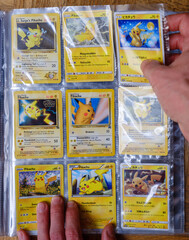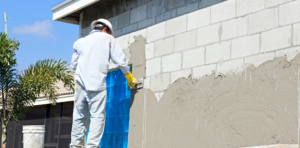Hair Salons San Francisco haircuts, styling, and other services. They may also offer products to maintain their clients’ tresses between appointments.
Whether you need a Keith Richards circa 1970 mullet or a subtle shag cut, this salon has you covered. They have the best colorists in town and are always coming up with new techniques to push the boundaries of coloring.

Choosing the right location for your salon is one of your most important decisions. The ideal location should be well-populated and accessible by car or public transportation. It should also be located far enough away from competitors that you won’t compete with them for clients. It should also be suitable for the type of salon you plan to open. For example, a hair salon should be located in a busy area, while a beauty salon can be situated in an upscale neighborhood.
A hair salon specializes in providing services related to hair, including cutting and styling, coloring and highlighting. Most salons offer a variety of hair products and tools, including shampoos, conditioners, hair styling gels and sprays, as well as specialized treatments for damaged hair. They also offer a wide range of salon packages that include haircuts, highlights and other services.
In addition to hair services, some salons specialize in other cosmetic treatments, such as facials and nail treatments. Some of these salons are independent, while others are franchises with a large number of locations. In the United States, there are over 32,000 hair salons, including both franchise and independent establishments. Many of these salons are located in major cities, such as New York City and Los Angeles.
The staff at a salon is crucial to its success. They should be highly qualified and skilled in the various services they provide. They should be able to answer any questions that customers might have and work with the client to achieve a desired look. In addition, they should be able to work well under pressure and meet deadlines.
Some of the best salons in the world feature top-notch stylists and a relaxing environment. The Julien Farel Restore Salon & Spa in Manhattan, for example, is famous for its celebrity clientele and expert styling. The staff at this salon is trained in a variety of techniques and uses the latest trends to create the perfect look for each customer.
A successful salon will have a strong presence in the community and an attractive brand image. It will also offer attractive pricing and discounts to attract customers. The salon should partner with local small businesses to promote itself and increase word-of-mouth advertising. In addition, it should offer loyalty discounts to its existing customers. This will encourage customer retention and increase revenue.
Staff
While launching a beauty salon may seem like an intimidating venture, it’s a great option for those with a passion for the industry. From hair to nail care, there are many ways to create a successful beauty salon. However, opening a salon requires significant initial investment and careful planning. The following tips can help you avoid pitfalls and make your salon a success.
Choosing the right staff for your business is essential to a smooth operation. The right team will help you attract and retain clients, so it’s important to find employees with the skills and experience your business needs. You can also consider hiring employees based on their personality and work ethic. For example, if you want your employees to be outgoing and friendly, hire someone who is.
If you’re thinking of starting a hair salon, you’ll need to think about the location, staff, and equipment. You’ll also need a license and permits, business insurance, and inventory. When planning your budget, remember to include these costs when estimating your startup costs.
The manager is responsible for managing the finances and administrative aspects of a salon. They often have a background in accounting or salon management, but they don’t necessarily need to be a stylist. They also oversee salon operations and manage salon staff.
Stylists perform a variety of tasks, including shampooing and conditioning hair, cutting, styling, and coloring. They also perform scalp treatments and hair removal services. They use a wide range of tools and products to achieve client-specific styles. They also provide excellent customer service by greeting and listening to clients. They also sanitize their workstations and follow health and safety protocols.
Salon assistants provide essential support to the stylists. They often sweep and clean workstations between appointments, grab towels from the back, and assist in mixing colors. They can also help clients choose products and take payments at the cash register. Depending on the size of the salon, they may also do other tasks, such as answering phones and marketing.
A freelance stylist is a temporary employee who works for the salon when needed. They can be a great way to increase productivity and fill in gaps when other staff members are unavailable. Freelance stylists typically receive higher wages than other salon employees, and they can also negotiate their contracts.
Services offered
Hair salons offer a variety of beauty services. These include haircuts, styling, color, and treatments. They also provide makeup and nail services. Some even offer massages. They usually offer discounts on their products to clients. They also promote a range of packages that include various services.
Many salons have their service menu on their website, and this is a good way to attract new customers. It is important to use the right language when creating a salon menu. It must be clear and concise, but not boring or dull. It should be easy to read and understand, and it must not contain grammatical errors. Using a grammatical error checker is a good way to prevent this.
When choosing services for your salon, be sure to choose a defining element that makes you stand out from the competition. Identifying and dominating a niche market will make it easier to grow your business. This will help you to become a recognized brand and build client loyalty.
Another way to increase your profits is by offering express salon services. These are simple, quick, and cost-effective. Adding these services to your salon will boost client satisfaction and bring in more revenue. These services can be as simple as adding volume to flat hair, a quick demi-permanent color touchup, or highlights.
Adding specialty services to your salon will help you attract a loyal client base and gain exposure. These services are difficult to find elsewhere, and people will be willing to travel long distances for them. Hair extensions are a popular example of this type of treatment. They come in a wide range of styles and application methods, from fusion to hand-tied and tape-ins. These options are also more affordable for the client than full-head wigs.
When creating a salon menu, make sure to put your most popular services at the top of the list. This will encourage clients to book appointments sooner. Moreover, it will make them feel that they are getting the best value for their money. You can also add eye-catching packages for special occasions, such as bridal parties.
Pricing
Pricing is an essential part of a salon business. It affects not only your customers’ perceptions of your brand, but also your profits. Undercharging can hurt your image, while overcharging can attract the wrong client base. A carefully planned pricing structure can help you find a balance that makes sense for your salon business.
To determine the right prices, you need to consider a variety of factors and considerations. These include your clientele’s needs, your competitor pricing, and the amount of time and resources it takes to perform a treatment. For example, a stylist with several years of experience will likely charge more than a newbie. This is because they have accumulated more knowledge of hairstyles, and may have prestigious training or education.
A good way to make your services more attractive is to offer bundles and discounts. For example, you can package a haircut, wash, and scalp massage together to give clients more value for their money. Bundling is an excellent way to increase sales and boost your profit margins.
Your hidden costs can significantly impact your salon’s profitability. For example, the cost of salon products can be a major expense. You also have to account for storage and laundry expenses, as well as bank commissions and other variable payments. It is important to carefully sum up these expenses on a weekly basis so that you can calculate your monthly budget accurately.
If you are planning to start a new salon, it is essential to understand your clientele and market before determining the right price for treatments. This will ensure that your salon offers a variety of services that appeal to your target customers. It is also vital to consider the disposable income of your potential clients, as this will influence their willingness to pay for various treatments.
Another important factor to consider is your location. Salons in urban areas typically charge more than those located in rural areas, due to higher operating and product costs. Other hidden costs can include cleaning, inventory, and marketing expenses. Using a salon software like GlossGenius can help you keep track of your hidden costs and avoid overspending. It will also save you time by allowing you to collect payments online and automating your billing process.








